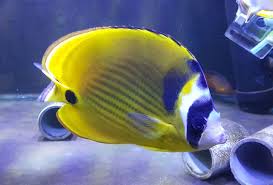
Flowers have long captivated artists and enthusiasts alike with their beauty, fragrance, and symbolism. The art of floral arrangement, or ikebana in Japanese culture, celebrates the harmonious interplay between nature and human creativity. From traditional practices to avant-garde innovations, floral arrangements serve as both decorative elements and profound expressions of artistic vision. Exploring the correlation between flowers and the art of floral arrangement unveils the diverse techniques and inspirations behind these captivating creations.
**Historical Roots and Cultural Significance:**
1. **Origins of Floral Arrangement:** The tradition of arranging flowers dates back centuries, with roots in various cultures such as Japanese ikebana, Chinese flower arranging, and European floral design. These practices evolved from ritualistic offerings and religious ceremonies to become esteemed art forms celebrated for their aesthetic appeal and spiritual significance.
2. **Symbolism and Meaning:** Flowers carry rich symbolism and cultural significance, with each bloom representing unique qualities and sentiments. In floral arrangement, the choice of flowers, colors, and forms conveys deeper meanings and emotions, reflecting themes of beauty, love, renewal, and harmony with nature.
**Techniques and Styles of Floral Arrangement:**
1. **Ikebana:** Ikebana, the Japanese art of flower arranging, emphasizes simplicity, balance, and asymmetry. Practitioners carefully select and position flowers, branches, and leaves to create dynamic compositions that evoke natural landscapes and evoke seasonal themes. Ikebana arrangements often feature minimalistic containers and adhere to strict principles of proportion and space.
2. **European Floral Design:** European floral design encompasses a wide range of styles, from classical to contemporary, characterized by lush arrangements and elaborate compositions. Florists incorporate diverse floral varieties, textures, and colors to create opulent displays that evoke opulence, romance, and extravagance.
3. **Contemporary and Avant-Garde Approaches:** In contemporary floral art, artists push the boundaries of tradition, experimenting with unconventional materials, techniques, and concepts. Installations, conceptual designs, and interactive artworks challenge perceptions of floral arrangement, blurring the lines between art, design, and performance.
**Applications in Art and Design:**
1. **Fine Art:** Flowers have been a perennial subject in fine art, inspiring painters, sculptors, and photographers to capture their beauty and ephemeral qualities. Floral still lifes, botanical illustrations, and abstract interpretations celebrate the diversity and transience of floral forms, inviting viewers to contemplate themes of nature, life, and mortality.
2. **Interior Design:** Floral arrangements play a vital role in interior design, enhancing living spaces with color, texture, and vitality. From minimalist compositions to lavish centerpieces, floral arrangements serve as focal points that infuse rooms with freshness, warmth, and visual interest.
3. **Event and Wedding Decor:** Flowers are indispensable in event and wedding decor, adorning venues with elegance and charm. Floral designers create bespoke arrangements that reflect the theme, season, and ambiance of celebrations, transforming ordinary spaces into enchanting environments that leave lasting impressions.
**Conclusion:**
In conclusion, the relationship between flowers and the art of floral arrangement is a testament to the enduring allure and versatility of nature’s bounty. Whether through traditional practices, contemporary innovations, or artistic interpretations, flowers continue to inspire and captivate audiences around the world. As both decorative elements and profound expressions of creativity, floral arrangements serve as timeless reflections of beauty, harmony, and the human spirit.










